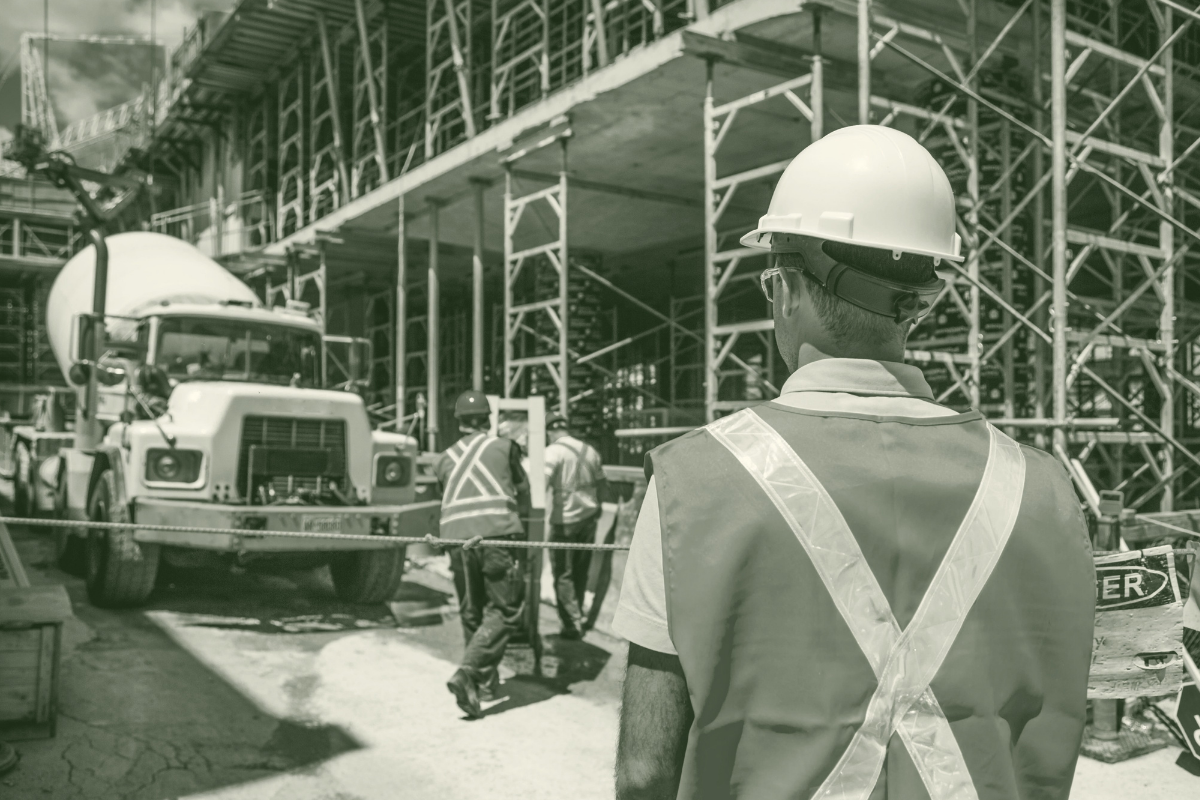
Delays are a reality for every company doing business in the construction industry, whether it’s a single custom home or a university sports complex. Why? Because there are literally hundreds, if not thousands, of moving parts that go into getting a project from a brilliant idea to final occupancy permit.
Outside factors—from weather to no-growth picket lines to severed global supply chains—can drag out a project by years. Inside company factors, including issues like poor internal management, lack of labor, or the inability to source materials and equipment, can put the brakes on a project and drag the rosy revenue prospects of the most promising jobs into the red.
Many of these negative situations are out of the control of a building manager. Because of this, smart managers and stakeholders in any build must control every aspect of building to offset unforeseen delays.
In this post, we will dive into what construction delays are and how they happen. Then, we'll demonstrate how asset management in construction can mitigate delays and help support construction pros who want to proactively forecast construction issues, address them quickly, and preserve their company’s budgets and schedules.
Jump To:
What Causes Construction Delays?
Before you can solve delays, you need to understand what causes them. While this post will talk about those that can be controlled by a professional management team members, some issues are of their control.
Here are seven of the most common causes of construction delays:
1. Design Decisions
The client can stymie you right out of the gate, unfortunately. It’s important to assess the schedule of the design or other requirements from the client, particularly if your company is not responsible for that aspect of a build. This includes the general design of the structure(s) and also other details that could impact install dates.
2. Weather
This can’t be emphasized enough: Weather changes. Good project managers will build in time for "rain dates" and with planning (and a little luck) can keep the build on schedule.
3. Building and Zoning Permit Delays
Many developers have been surprised when they go for a zoning variance to find 40 community stakeholders queued up in city hall to fight its approval. Working with communities can be an open-ended process and smart managers will build in time to handle the process. Building permits can be delayed for non-compliance but also because the municipality is backlogged.
4. Labor Shortage
Before the pandemic, the labor market was already drying up. Project managers turned to technology to keep workers scheduled correctly and paid on time.
5. Subcontractor Schedules and Compliance Issues
GCs are responsible for their subs in terms of schedules and compliance. Because of the labor shortage, many subcontractor schedules get pushed, causing a ripple effect through other jobs. And, because they are so busy, many fall behind on their insurance or licensing.
6. Material Shortages
The supply chain has not yet recovered from the pandemic, which has caused uneven availability of everything, from raw materials (like steel) to finished products (such as appliances and ventilation systems). In fact, our recent Supply Chain Disruption Survey found that 79% of supply chain professionals have to deal with unanticipated changes daily or weekly.
7. Poor Project Management Processes
Even in the best of times, a project can run off the rails quickly when project management best practices are not followed. This is particularly important with communication. Many businesses are turning to construction management software to track assets and manage processes.
What Is Construction Asset Management?
First, it’s helpful to understand what an asset is. In general, an asset is anything owned by a person or business that has a monetary value. In the construction industry, it typically refers to equipment and machinery.
Construction asset management is the activity of managing a construction company’s assets. It is broken into two areas: asset procurement and asset tracking and management. In construction asset management, managers buy or secure assets, operate and maintain them, and upgrade, replace, or sell them.
For most construction companies, asset management is handled by teams who manage and monitor all valuable assets. In addition, managers forecast needs and augment assets when needed—or, conversely, get rid of unneeded inventory to help the company’s financial bottom line.
Benefits of Asset Management in Construction
There are numerous benefits to using asset management tools in the building industry. With it, a company can:
Track All Assets in Real Time
From job site lighting to front-end loaders, every asset and tool a company has can be accessed and monitored easily. Knowing what you have versus what you need to lease helps with budgeting and forecasting.
Understand the Lifecycle of Construction Assets
All the tracked equipment and machinery can be monitored for repairs, maintenance, scrapping, or sale. When you are about to begin a huge job, understanding the condition of your most important equipment is paramount.
Assess Performance
By tracking data on assets, a company will know how everything is being used, what is needed, what is performing well and what is rarely used.
Prevent Theft
If you know where your equipment is and how much of it you have, you’ll know if it’s missing. A good asset management system will include tracking, and tagging of equipment, particularly large-ticket items.
Put Safety First
When you monitor the status of your equipment, you will know when repairs need to be made and can be proactive with maintenance, which means fewer hazards or malfunctioning machines and fewer safety risks. This also keeps you in compliance with ISO 55001 standards.
Using Asset Management to Fix Construction Delays
The obvious reason asset management is important is encapsulated in the adage: "Time Is Money." By being efficient with your physical assets and being able to move them quickly to expedite projects, you can enhance your bottom line.
But to construction experts, it’s much more than just asset tracking and adhering to budgets, particularly for companies that value a strong corporate culture, a happy workforce, and repeat customers.
In his book “Building a Successful Construction Company: The Practical Guide,” Paul Netscher emphasizes that construction businesses that think filing for a “delay” and collecting money from subs or the client squares things may not realize the true cost of unplanned downtime.
In fact, if a construction schedule is extended, it means the contractor is on site longer than planned and will potentially incur the following costs for:
- Construction site facilities.
- Management and supervisory staff salaries plus their associated costs.
- The extension of the construction bonds, sureties, and insurances.
- Rental fees for construction equipment.
- Inefficient and unproductive use of personnel and equipment.
- Construction work moving into a season with unfavorable weather conditions, which wasn’t considered in the schedule or bid.
- Material and product price increases.
- Activities/tasks being undertaken out of sequence, which may result in issues with access, subs having to return multiple times to the site, damage to completed work, and storage and handling costs for materials.
In addition, many building companies don’t consider the cost of lost opportunity. While jobs languish, other jobs are awarded to competitors. Or, if a company moves forward with new contracts and is operating on multiple construction sites, it could be stretching assets and resources too thin.
All of these above scenarios, and a host of others, can be dispensed with by the use of construction asset management, particularly if a company approaches it strategically.
Asset Management Strategies for Construction Companies
Some best practices prevail when it comes to how to strategically use asset management that can benefit the whole company. Here are four important ones to consider for your plan:
- Have the right people in the right positions. Asset management can be managed by software quite easily, but you must have people in the right positions in your company to analyze the data that is produced and act on it to maintain efficiencies. Some experts suggest having an asset specialist in each major department of the company who reports to one asset management team.
- Make sure asset teams understand the life cycle of equipment. For example, It’s one thing to know your excavator is 11 years old, it’s quite another to know what that means in terms of remaining useful life. Construction equipment asset management also helps companies with depreciation activities.
- Evaluate your assets on a regular basis. Construction is a rough business and some equipment simply needs to be scrapped and replaced. You need to be able to make appropriate recommendations to protect your investment in equipment while also mitigating risk.
- Invest in robust construction asset management software. Using targeted technology will increase team member productivity and is a vital part of overall asset management in construction.
What Asset Management Features Does the Construction Industry Need?
Most construction companies understand that construction asset management cloud based software is a necessary solution for asset tracking because construction work is highly detail-oriented and operates under heavy regulatory requirements that must be monitored.
The complexity of the building process has simply outgrown spreadsheets and other manually tabulated information sources.
At a minimum, the construction asset management software you select should be a single source of truth, accessible anytime, anywhere, allowing users to:
- Track and forecast budgets.
- Merge and manage all business schedules, workflows, data, and day to day operations.
- Perform construction equipment asset management.
- Manage inventory and its location on all construction sites.
- Manage off site modular construction assets.
- Manage construction company sourcing and procurement.
- Access and share business contracts.
- Understand and monitor asset life cycle with an asset register.
- Manage change orders.
- Perform cost analysis.
- Track and schedule maintenance.
- Mitigate risk by monitoring compliance.
When considering construction asset management software, look for automated customizable dashboards that enhance productivity. They are the best tool because they allow access to so much information that is needed quickly, including easy custom reporting for example, which means your construction business will be more likely to use the software.
Asset Management Tools Can Improve Your Construction Business
With its 360-degree view of the assets of a construction company, asset management in construction is a concept that can bring efficiency and profits, particularly in these times of tight labor and cost increases. But more than that, it can build a company’s brand.
Regardless of how a project turns out, no stakeholder–from the subs to the project owner–wants to be involved in a dramatic skid to the finish with a slew of punch list followups and exhausted participants.
By creating an organized asset management system you can take on more business with confidence, track assets and extend the useful life of your equipment, attract higher-performing partners, and maximize profits–all without breaking a sweat.
FAQs
What is included in asset management?
Asset management includes tracking of vital assets of a company, maintaining a database of asset information, ensuring the data details are complete and up to date, and producing reports to facilitate efficient bid and build processes, among many other functions. Many technologies can help construction managers achieve proper asset management, mine data, and save money.
What is asset management in BIM?
Asset management in BIM (building information modeling) is the process of sharing asset data between the physical and modeling entities of a construction company to make sure the details of a build are accurately reflected in the modeling. Done right, asset management software can provide asset data that can be modeled to assess risk, create reports, and ensure proper installations.




